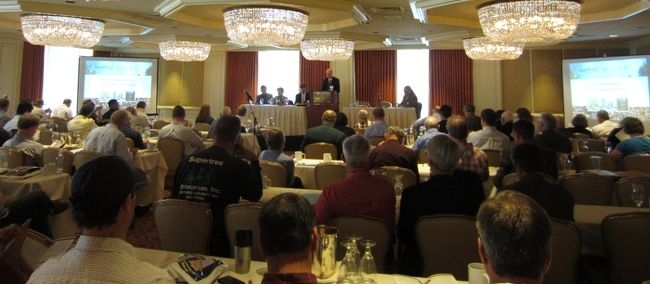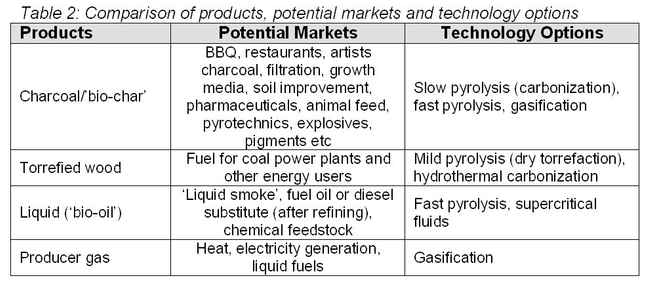Last week I was in Flagstaff, Arizona, for the Smallwood 2012 conference. I was on the planning committee and it was great to see over 200 people in attendance. The conference started with some good introductory presentations looking at the background to the Southwest forest products industry (Todd Morgan, University of Montana) and to broader federal policy issues (Butch Blazer, USDA). The conference then split into two tracks and covered topics ranging from collaboration, ecosystem restoration, grants and incentives, pre-treatment, technologies and products, markets and other topics.

I was fortunate to be moderating a panel on pyrolysis technologies. I started with a brief introduction to the range of pyrolysis technologies including slow pyrolysis, torrefaction and fast pyrolysis. The tables below compare pyrolysis technologies, outputs and markets.
The speakers and topics were:
- Jim Ippolito (USDA-ARS Northwest Irrigation & Soils Research Laboratory) – Biochar Opportunities
- Andy Soria (University of Alaska) - Pyrolysis Oil Opportunities
- Larry Felix (Gas Technology Institute) – Torrefaction Opportunities
Jim gave an excellent introduction to the uses and properties of biochar which can be produced from a variety of processes. I appreciated that, in addition to covering pyrolysis technologies, Andy and Larry introduced the audience to two alternative technologies: hydro-thermal carbonization (to produce a product similar to torrefied wood) and liquefaction using supercritical fluids (to produce a bio-oil). 
We have recently written a fact sheet on pyrolysis which is available here for download if you wish to learn more. It is currently in a draft form awaiting review. I would be grateful to receive comments on it.
The presentations from this session and the rest of the conference will be available shortly on the Forest Products Society website.

